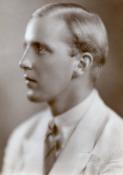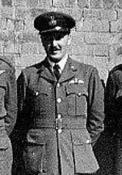
|
The King's School Canterbury |
Roll of Honour |
| Flight Lieutenant Harry Malcolm WILLIAMS (66508) | |
|
102 (Ceylon) Squadron, Royal Air Force Date of birth: 11th November 1915 Date of death: 14th April 1942 Killed on active service aged 26 Buried at St Mary's Churchyard, Smeeth |

|
| He was born in Adelaide, South Australia on the 11th of November 1915 the eldest son of Thomas Harry Williams, superintendent of Euston Exchange & China Telegraph Company, and Natalie of The Grange, Hamstreet, Kent, later of Mald Moreton, Smeeth, Kent. He was educated at Ash-Eton School, Folkestone and at the King's School Canterbury from September 1929 to April 1933 where he was The Grange. On leaving school he went on to Wye Agricultural College after which he went to Malaya where he worked in the rubber business. He was commissioned as a Pilot Officer in the Royal Air Force Volunteer Reserve on the 10th of February 1941 and was posted to Canada for training. He returned from Halifax on board the SS Mosdale and landed at Cardiff on the 2nd of April 1941. He was promoted to Flying Officer on the 10th of February 1942. On the night of the 6th/7th of April 1941 Harry Williams and his crew took off from RAF Topcliffe at 8.56pm in Whitley Mk V Z6796 for an operation to Huls. They dropped their bombs on a built-up area near Haltern and while they were over the target the aircraft was hit by anti aircraft fire. In spite of the damage the aircraft landed safely at Topcliffe at 4.40am. On the 14th of April 1942 102 Squadron converted to the Halifax bomber from the Whitley bomber. Harry Williams and his crew took off that day from RAF Dalton for an air test of the newly delivered Halifax Mk II R9488 DY- . At the time, he had 22.05 hours of solo flying time on Halifax aircraft and a total of 323.25 hours of total solo flying time. The aircraft crashed at York Gate Farm, Baldersby six miles to the north east of Ripon in Yorkshire at 12.46pm. There were several eyewitnesses to the crash who describe the aircraft making a series of left and right turns before stalling and spinning into the ground and burning. All eight of the crew were killed. The crew of a Halifax is normally seven but the presence of Leading Aircraftsman John Livesey on board is probably due to the air test. The cause of the crash was thought to be rudder imbalance. Theirs was the first Halifax aircraft to be lost during the war. The crew was: - Flight Lieutenant Harry Malcolm Williams (Pilot) Sergeant John Kirkpatrick Morris RAAF (Pilot) Sergeant Noel Grimoldby (Flight Engineer) Sergeant Philip Leonard Newell Trehearn (Observer) Flight Lieutenant Henry Noel Ross (Air Gunner) Sergeant Kenneth Harold Sutton (Wireless Operator/Air Gunner) Sergeant Kenneth O'Connelley (Wireless Operator/Air Gunner) Leading Aircraftman John Livesey His funeral took place on the 18th of April 1942. His father received the following letter dated the 20th of April 1942: - ?Sir, I am commanded by the Air Council to express to you their great regret on learning that your son, Acting Flight Lieutenant Harry Malcolm Williams, Royal Air Force, lost his life as the result of aircraft accident on 14th April, 1942. The Air Council desire me to you and Mrs. Williams their profound sympathy in your bereavement.? His brother, Pilot Officer Lionel Graham Williams OKS 233 Squadron Royal Air Force, was killed in action on the 3rd of November 1940. He is commemorated on the war memorial at Smeeth in Kent and on the memorial at Wye Agricultural College. |
|
 | |
| The Grange |
Back